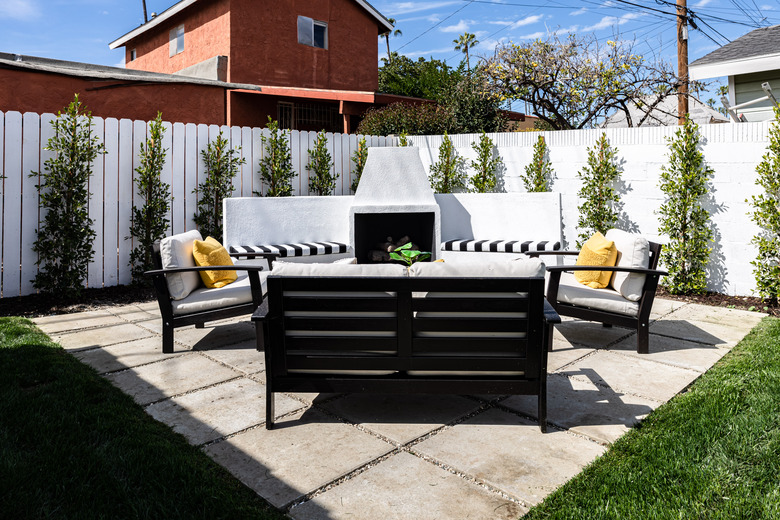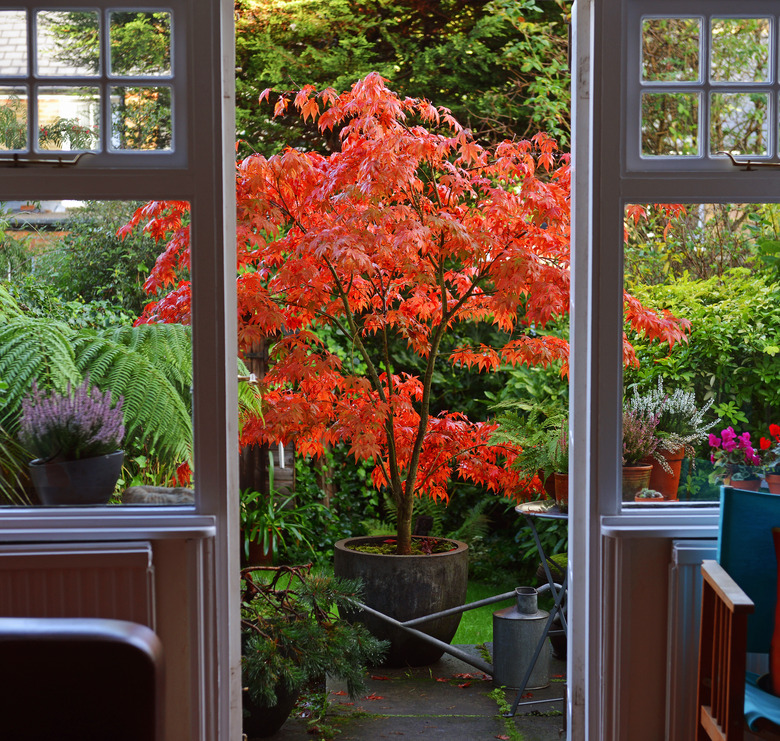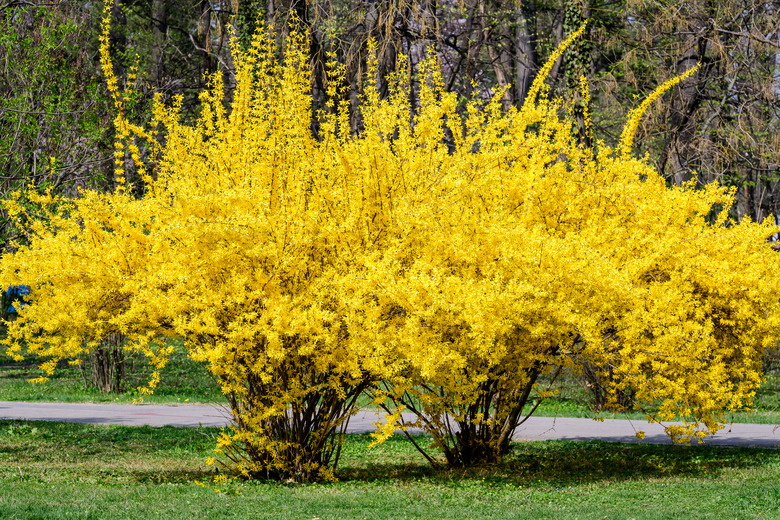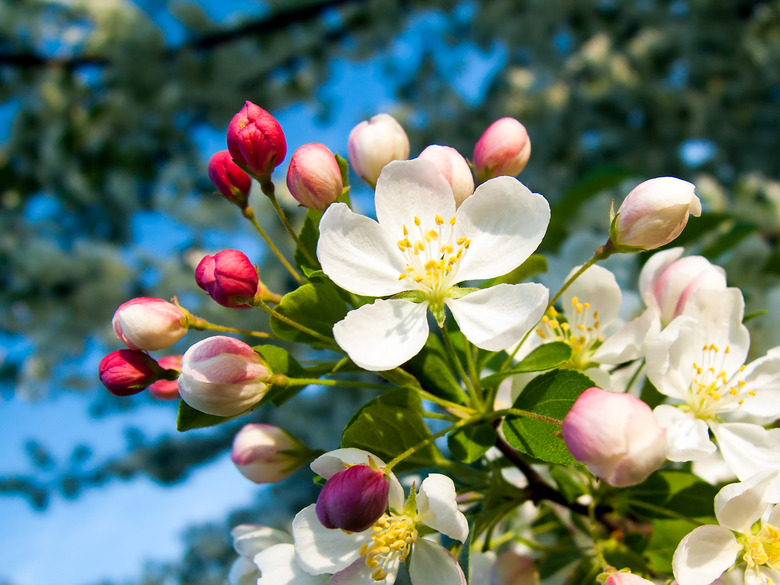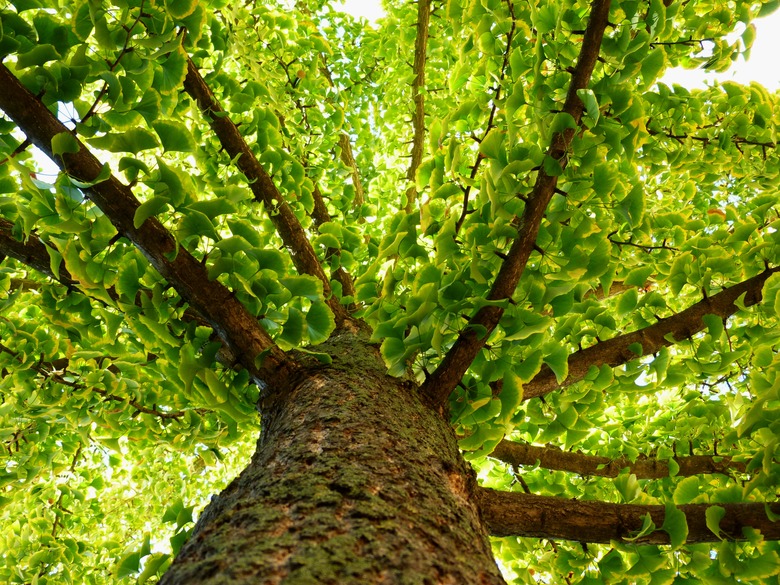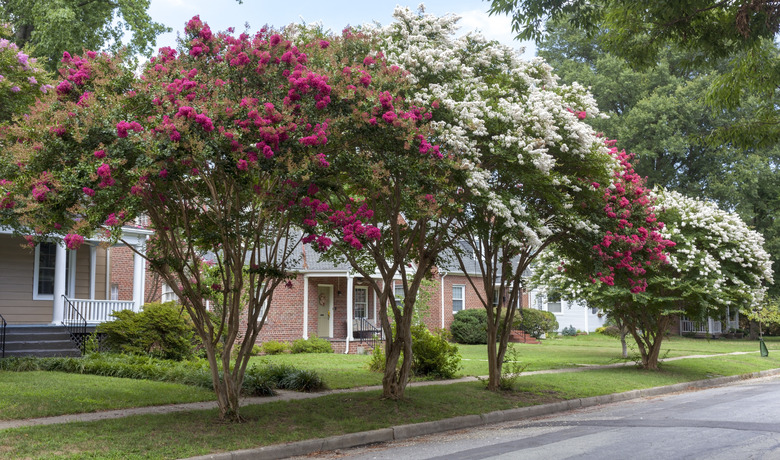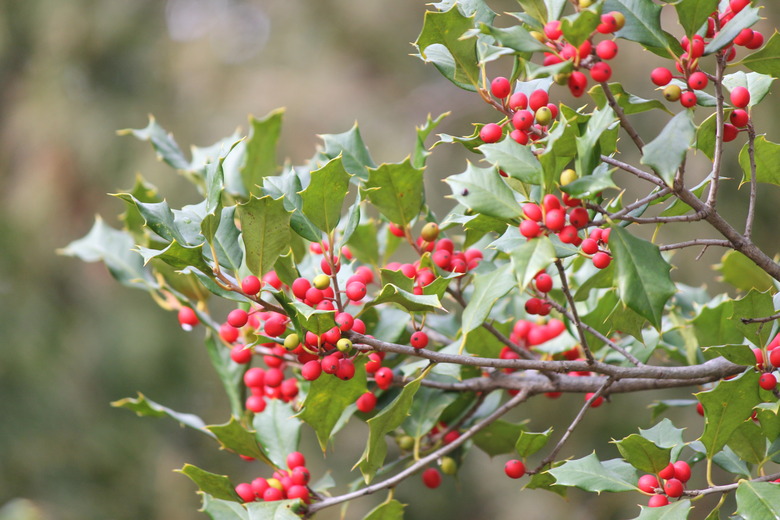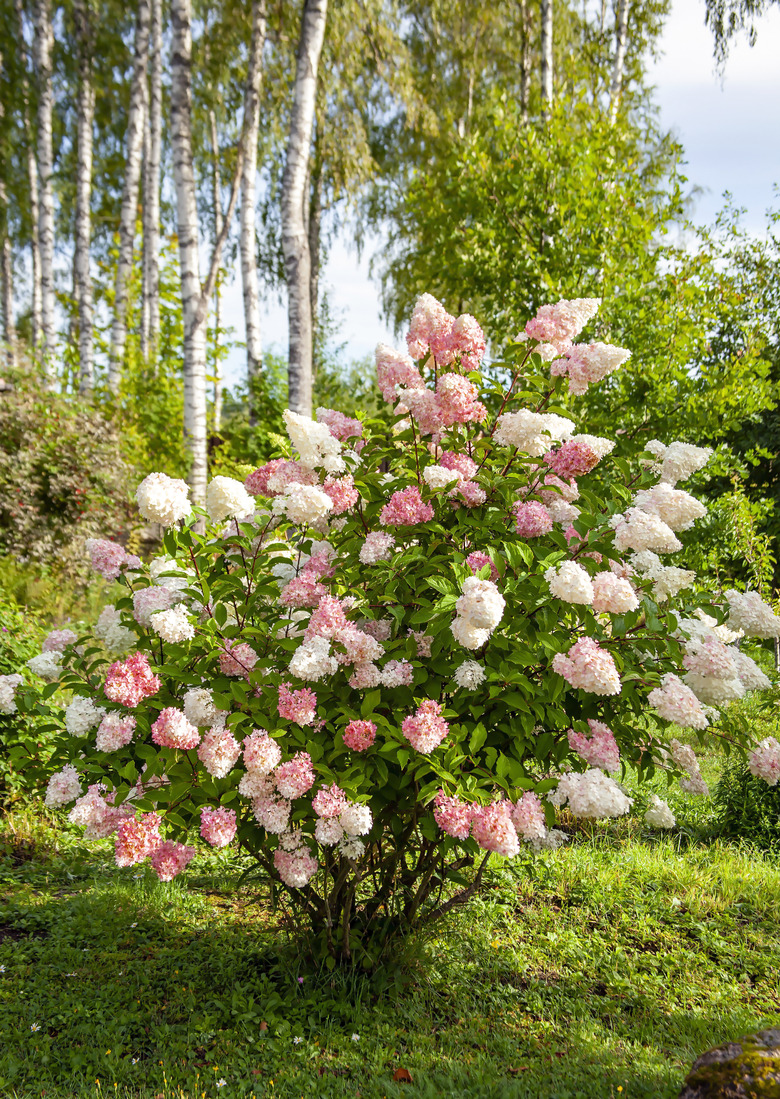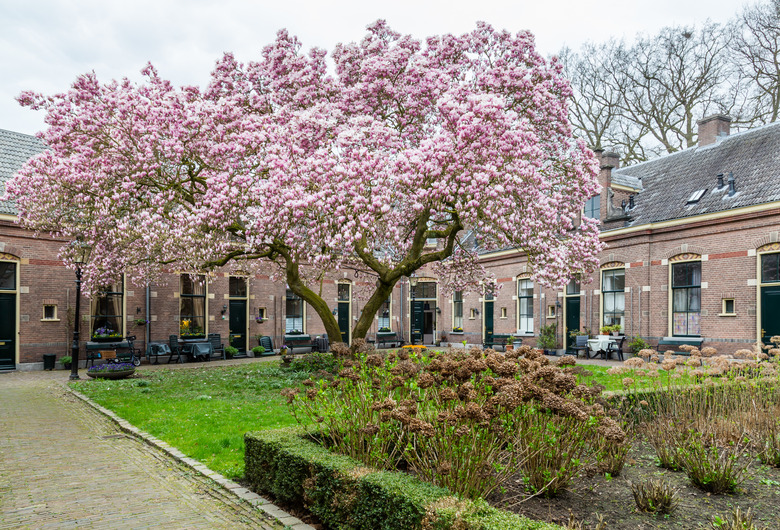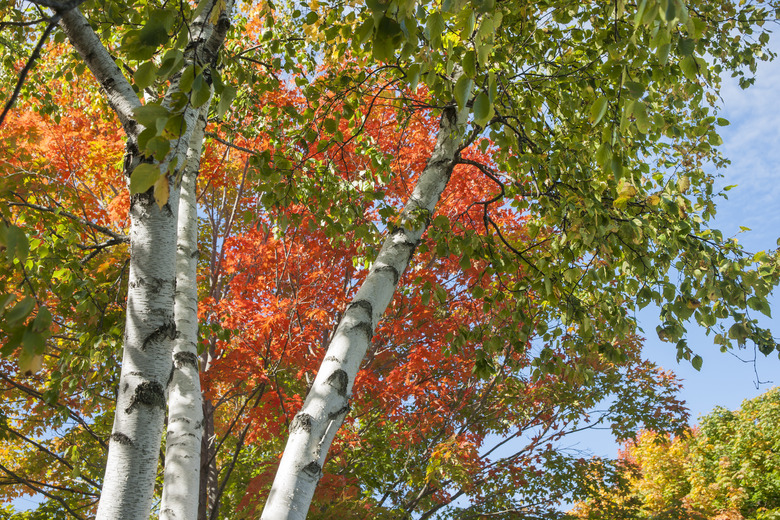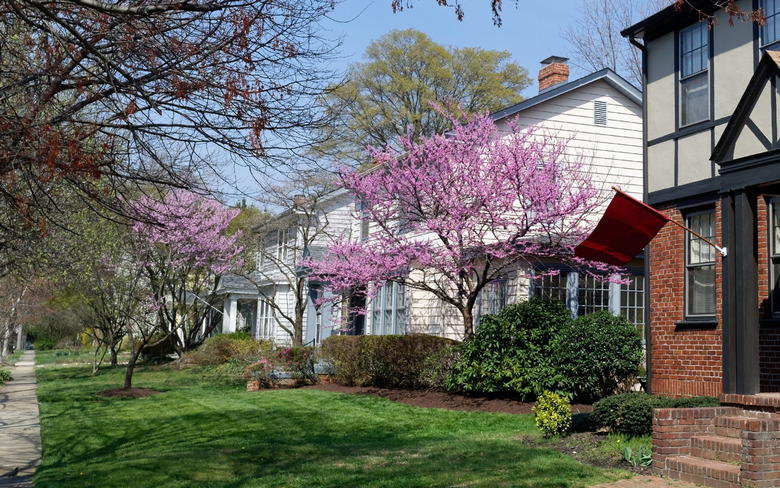10 Best Ornamental Trees For Your Landscape
We may receive a commission on purchases made from links.
Trees play a variety of roles in home landscapes: Some provide shade, others are grown for their fruit or nuts and some are there to please us with their beauty or sensory interest. Trees grown for their capacity to delight or engage us are called ornamental trees, and they tend to be gardener favorites in any backyard. If you are looking to plant an ornamental tree, there are more than a few that deserve consideration.
Selecting Ornamental Trees
Selecting Ornamental Trees
An ornamental tree is a tree with features that please you. Flowering trees may come to mind, but blossoms are only one of many botanical elements that charm, according to UC Master Gardeners of Tulare & Kings Counties. The attractive feature might be exotic leaf color or shape, exfoliating bark that is visible in winter, unusual seed pods, vivid fall foliage or a heady fragrance.
When you are selecting an ornamental tree, only consider those that thrive in your garden's hardiness zone and in the sun exposure your garden offers. Compare the mature size of the tree to the space you have available. If your ornamental tree is also going to serve as a windbreak tree or a shade tree, you'll need to consider its value in both roles. Don't forget to think about maintenance, matching how much you are willing to undertake with the amount of care the tree is likely to require.
1. Japanese Maple Trees
1. Japanese Maple Trees
Japanese maple (Acer palmatum) are popular ornamental trees that are admired for their relatively small size (under 25 feet) and unique foliage. These small trees require little maintenance after they are established, and they can live up to 150 years. You'll find hundreds of cultivars, so pick one with the mature size and features that appeal to you.
Japanese maple trees are perennials in U.S. Department of Agriculture plant hardiness zones 5 through 8, according to Cal Poly Urban Forest Ecosystems Institute. The trees prefer a site with partial or full shade and acidic, well-drained soil.
Leaf shapes range from a traditional maple shape to lobes so slender that the foliage looks frilly. Leaf color can be green, bronze, purple, red or orange. Japanese maples are deciduous, and just before the leaves fall, some cultivars light up in autumn brilliance. The bark is also ornamental. It can be green, gray or mahogany and may be furrowed or smooth.
2. Forsythia
2. Forsythia
Some grow forsythia (Forsythia x intermedia, USDA zones 4-8) as a multistemmed shrub, but you can also grow them in tree form. Forsythia is a small tree, topping out at 10 feet tall and spreading to 12 feet. While much of the year a forsythia's green foliage will blend in with other trees in the area, the tree becomes suddenly and dramatically ornamental in early spring when a profusion of yellow, bell-shaped flowers fill the arching branches. These ornamental trees are particularly ornamental in a flowering hedge or screen, where you should plant them 4 to 6 feet apart.
Forsythias grow quickly — to 24 inches a year — and flower early. Site your forsythia in acidic, well-drained soil in a bed that gets at least four hours of sun per day. These are easy-care plants, and the only regular task you'll face is pruning them after flowering.
3. Flowering Crabapple Trees
3. Flowering Crabapple Trees
Flowering crabapple (Malus spp., USDA zones 4-8) are small trees often used as ornamentals in home landscapes. They feature masses of colorful blossoms as well as fruit and work well in small spaces. The fruit is closely related to apples but smaller, with each crabapple 2 inches or less in diameter.
Crabapples are prized for their masses of spring flowers. These can be extremely fragrant and colorful, with different cultivars producing flowers in scarlet, pink, white, purple, carmine or coral. Some crabapple flowers look like roses, while others have fringed or cupped petals. They usually bloom in spring, and the flower display is gone by early summer.
The second ornamental act occurs in fall when the fruit ripens. Some cultivars produce red fruits, while other crabapples are yellow or green. The fruit hangs on the tree through much of winter, providing food for hungry birds.
4. Ginkgo
4. Ginkgo
The ginkgo (Ginkgo biloba, USDA zones 3-8) stands out as one of the most beautiful of all deciduous trees, with unique, fan-shaped leaves that blaze yellow in the fall. Fossil evidence establishes that the trees have been around for some 270 million years. Today, ginkgoes are planted as both ornamental trees and shade trees, and they can live thousands of years.
Ginkgoes are large trees growing to 80 feet tall, according to the Morton Arboretum. They require well-draining soil and at least six hours of sun per day. If these conditions are met, the trees establish easily. They are drought tolerant and also tolerant of urban pollution and many other conditions.
You'll only want to consider a male tree. Females bear foul-smelling fruit that creates a mess beneath the tree. For obvious reasons, most trees sold in commerce are male.
5. Crape Myrtle Trees
5. Crape Myrtle Trees
Crape myrtle trees (Lagerstroemia indica, USDA zones 7-9) are known as the lilac of the South, and like lilac, they bloom in the hottest months of the year. From June through August, they overflow with dramatic flowers. The trees are deciduous and also offer attractive exfoliating bark that is on display when the lush leaves fall. Extremely popular in the Southern states, some cultivars are hardy to zone 6, although most grow best in USDA zones 7 through 9, according to NC State Extension.
You can find crape myrtle cultivars with mature heights ranging from 5 feet to 40 feet tall. The larger specimens double as shade trees. Tall or small, these ornamentals need a sunny site in order to flower profusely but will tolerate any type of soil, from clay to sand. They require regular irrigation, and you'll do best to trim off the seed pods for continuous seasonal blossoms. These trees bloom on new wood, so prune them in late winter.
6. American Holly Trees
6. American Holly Trees
Evergreen trees hold their leaves all winter long. This is a joy with a broadleaf evergreen tree like American holly (Ilex opaca), with its attractive canopy of glossy foliage. These North American natives have an attractive pyramid shape, dark-green leaves and bright-red fruit. The holly berries mature in autumn and hang on the branches much of the winter. A holly tree is either male or female, and you'll need one of each to get the fruit.
According to the University of Kentucky, these trees grow to 50 feet tall in U.S. Department of Agriculture plant hardiness zones 5 through 9. They require well-drained acidic soil and do best in a site protected from strong winds. American holly trees are subject to pest infections including leaf miner and scale. Over 1,000 cultivars of American holly are available in commerce, so consider one that has lots of red fruit, attractive leaves and a dense habit.
7. Pee Gee Hydrangea Trees
7. Pee Gee Hydrangea Trees
It may be a stretch to call most hydrangea ornamental trees, but the pee gee hydrangea (Hydrangea paniculata) is different. It's alternate common name is "tree hydrangea," and these plants can grow to 20 feet tall with a similar spread, according to Arbor Day Foundation. That qualifies them as small trees that are perfect for small spaces. Pee gee hydrangeas are hardy plants that grow best in U.S. Department of Agriculture plant hardiness zones 3 through 8.
Pee gee hydrangea trees grow quickly, up to 24 inches in a single year. The leaves are a rich, dark green and up to 6 inches long, but it's the flowers that steal the show. Pee gee produces extraordinary panicles of white flowers that turn purplish-pink as they mature during the summer. The panicles can grow to 18 inches long if the plant is thinned. These hydrangeas grow best in a well-draining site with at least four hours of unfiltered sun.
8. Saucer Magnolia Trees
8. Saucer Magnolia Trees
It's hard to imagine a more glorious ornamental than saucer magnolia (Magnolia x soulangeana, USDA zones 4-9). This show-stopper offers a profusion of early spring blooms that open on bare branches: white flowers with a flush of pink. These magnolia blossoms are shaped like saucers and grow up to 10 inches across. They are extremely fragrant. The flowers are the primary ornamental feature that makes this tree a favorite in the United States and Europe, but the leathery leaves are also attractive, as is the silver bark.
This magnolia tree would serve as an excellent focal point in any yard. Since the tree tops out at only 30 feet tall, it may work in relatively small yards as well as larger ones. Saucer magnolia trees need a site with full sun — at least six hours a day — and acidic, well-draining soil.
9. Paper Birch Trees
9. Paper Birch Trees
Pretty leaves and peeling bark are the ornamental features of paper birch trees (Betula papyrifera, USDA zones 2-7). The leaves are a fresh green and are heart-shaped, and they offer wonderful fall color when they turn yellow in autumn. Paper birch trees often grow with many trunks, although they can be pruned to a single trunk. They are fast-growing trees, pushing up 24 inches a year to a mature height of up to 70 feet. They prefer sun on their leaves and shade on their roots.
These slender birches are American native trees, which means they are fairly self-sufficient. They do best in chillier climates. Though paper birches can be cultivated in USDA zones 2 through 7, they live longest — for hundreds of years — on the cooler end of the spectrum. Plant them in acidic, well-draining soil, ideally near a river, lake or other water source. Alternatively, keep the soil moist.
10. Eastern Redbud Trees
10. Eastern Redbud Trees
Eastern redbud trees (Cercis canadensis) are attractive ornamental trees that grow well in many areas. They thrive in U.S. Department of Agriculture plant hardiness zones 4 through 9, according to Arbor Day Foundation.
Anyone who loves pink flowers will appreciate the rosy redbud blossoms. They appear in early spring on graceful, spreading branches before the leaves appear. The leaves put on a show as well, opening in a rich shade of purple before maturing into deep green during summer and then turning yellow in autumn. The fall color is particularly striking.
Redbuds are dramatic landscape trees, thanks to their irregular branching pattern and lovely canopy of heart-shaped leaves. They grow to 30 feet tall with a spread of up to 35 feet. Eastern redbuds require some sun, at least four hours a day, but they aren't picky about soil. They grow in acidic and alkaline soil, sandy and clay soil and loamy, well-drained soil.
References
- Arbor Day Foundation: Top 10 Flowering Trees
- Toronto Master Gardeners: Small Ornamental Trees
- UC Master Gardeners of Tulare & Kings Counties: Ornamental Tree Selection & Guide
- Cal Poly Urban Forest Ecosystems Institute: Japanese Maple
- University of Kentucky: American Holly
- NC State Extension: Lagerstroemia indica
- Gardenia: How to Choose the Right Flowering Crabapple for Your Garden
- Arbor Day Foundation: Pee Gee Hydrangea
- Arbor Day Foundation: American Redbud
- Vermont Center for Ecostudies: Paper Birches
